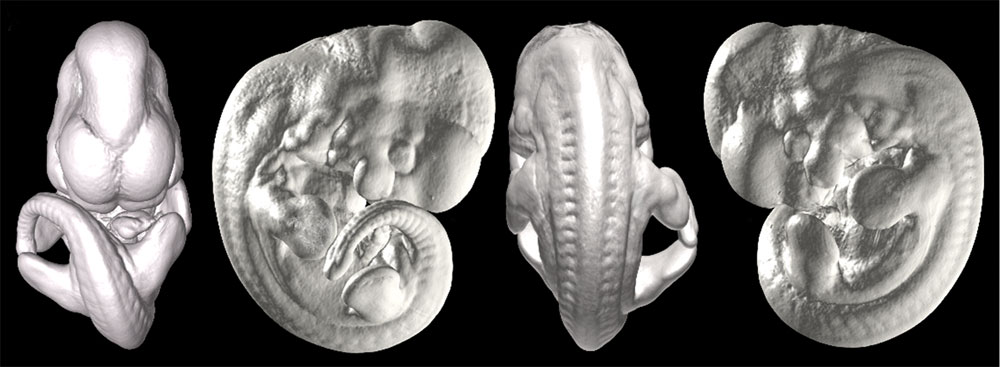Embryology for K12 Students: Difference between revisions
| Line 33: | Line 33: | ||
Now follow the growth and changes in the embryo over time. | |||
<font color=red>'''Next:'''</font> [[K12_Week_1|'''Week 1''']] | <font color=red>'''Next:'''</font> [[K12_Week_1|'''Week 1''']] | ||
Revision as of 08:06, 22 March 2011
Introduction
This is page has been made to help the younger student (from K to 12) understand some of the basics of how an embryo grows.
| width=360px|height=425px|controller=true|autoplay=true</qt>
|
This movie covers the 9 months of human development. Starting after fertilization and ending with the fetus just before birth. This movie also shows how the embryo attaches to the mother's uterus (right) and how the placenta forms. This movie near the end shows only the fetus.
|
Start Here
In humans, the growth of a baby inside a mother takes about 9 months.
In chickens, mice and rats this growth only takes about 3 weeks.
- Question: How long does it take for cats and dogs to develop? (Dogs)
- During this time a single cell will grow into many different cell types with different shapes and jobs to do in the body.
- A similar process will occur in all different embryos.
- In humans, many important changes occur in the first few weeks of development and much of the following 9 months is growth.
Now follow the growth and changes in the embryo over time.
Next: Week 1
Views of a Mouse Embryo at 11.5 days (front, right, back and left)
Teachers Note
| Author Comments |
|---|
|
Cite this page: Hill, M.A. (2024, May 2) Embryology Embryology for K12 Students. Retrieved from https://embryology.med.unsw.edu.au/embryology/index.php/Embryology_for_K12_Students
- © Dr Mark Hill 2024, UNSW Embryology ISBN: 978 0 7334 2609 4 - UNSW CRICOS Provider Code No. 00098G

